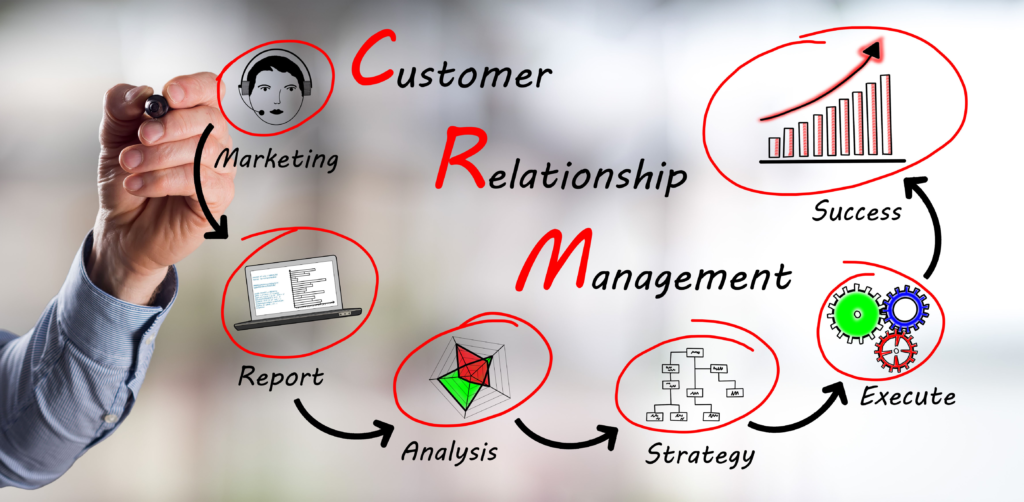7 Functions of Marketing
Market Research: A Foundation for an Effective Marketing Plan
What Is Market Research?
Market research is like having a secret superpower, granting you the ability to understand your customers better than they understand themselves. It’s a systematic process that dives deep into the minds and desires of your target audience, uncovering hidden gems of knowledge that will shape your business strategy.
Step 1: Searching for Knowledge
Before embarking on your market research journey, take a moment to appreciate its transformative power. Imagine gazing into a crystal ball, peering into the future of your business, armed with data-driven insights that inform your every move. That’s the magic of market research!
Step 2: Looking Into the Glass
Now, let’s put on our detective hats and dive into the first phase of market research: gathering information. Start by exploring existing data and conducting surveys, interviews, or focus groups. This will help you unearth valuable nuggets of wisdom about your potential customers, their needs, and their pain points.
Ah, the sweet taste of revelation! Armed with the data you’ve gathered, patterns and insights will begin to emerge. You’ll start connecting the dots, uncovering unmet needs, and identifying gaps in the market. This is where your personal experience comes into play, as you combine your knowledge and intuition with hard data to chart your course.
Step 4: Building Your Business Strategy
With a treasure trove of insights in hand, it’s time to develop your business strategy. Determine your target market, positioning, and unique selling proposition. Craft a powerful value proposition that speaks directly to your customers’ hearts, captivating them with an irresistible promise they simply can’t resist.
Step 5: Putting Your Strategy into Action
Now it’s time to take your carefully crafted strategy and put it to the test in the real world. Launch your product or service, armed with the confidence that comes from knowing you’ve done your homework. But don’t stop there! Market research is an ongoing adventure, and it’s crucial to keep your finger on the pulse of your customers’ evolving desires and expectations.
Step 6: Adapting and Thriving
In the ever-changing landscape of business, adaptation is key. Keep refining your offerings, monitoring competitors, and staying ahead of the curve. Market research isn’t a one-time affair—it’s a lifelong companion on your journey to success.
Step 7: Celebrating Success
As you witness the fruits of your labor—satisfied customers, soaring profits, and a thriving business—take a moment to revel in your triumph. Market research has guided you every step of the way, transforming your dreams into reality.
Comparison of the 7 Functions of Marketing
| Function | Description | Key Activities | Importance |
|---|---|---|---|
| Marketing Research | Gathering and analyzing information about the market, customers, and competitors to make informed decisions. | Surveys, data analysis, competitive analysis. | Understanding market trends and customer needs. |
| Product Development | Creating, designing, and improving products or services to meet customer demands. | Idea generation, design, prototyping, testing. | Ensuring products meet customer expectations. |
| Sales Promotion | Using tactics to boost sales and attract customers, often in the short term. | Discounts, coupons, contests, limited-time offers. | Generating immediate sales and customer interest. |
| Advertising | Promoting products or services to a target audience using various communication channels. | TV, radio, online ads, print media, social media. | Creating awareness and attracting potential customers. |
| Distribution | Ensuring products are available to customers at the right time and place. | Supply chain management, logistics, retail partnerships. | Efficiently reaching customers and meeting demand. |
| Pricing | Determining the right price for products or services based on market factors. | Competitive analysis, cost evaluation, pricing strategies. | Maximizing profits while staying competitive. |
| Selling | Directly interacting with customers to offer products or services. | Sales presentations, negotiations, customer relationship management. | Closing deals and building customer relationships. |
Decoding the Role of Pricing Strategy in the Marketing Function
Understanding Pricing Strategies
Picture this: You walk into a store, and a shiny new product catches your eye. You pick it up, intrigued. But then, you glance at the price tag, and suddenly, a wave of hesitation washes over you. The power of pricing has just revealed itself, influencing your perception and decision-making process.
Balancing Perception and Profitability
Pricing is a delicate dance, where you must strike the perfect balance between customer perception and profitability. It’s about finding the price point that maximizes revenue while still offering perceived value to your customers.
The Psychology Behind Pricing
Psychology plays a fascinating role in pricing. Customers’ perception of value is influenced by factors such as anchoring, social proof, and the paradox of choice. By understanding these psychological triggers, you can master the art of pricing and nudge customers toward a purchase.
Types of Pricing Strategies
Let’s dive into the world of pricing strategies, where you have an array of options at your fingertips. From cost-based pricing and value-based pricing to competitive pricing and dynamic pricing, each strategy brings its own set of advantages and considerations. Explore these strategies and uncover which one aligns best with your business goals.
Data-Driven Decision Making
Gone are the days of guessing games. In today’s data-driven world, leveraging analytics and market research is the key to unlocking pricing success. By analyzing customer behavior, conducting A/B testing, and monitoring market trends, you can make informed pricing decisions that propel your business forward.
Avoiding Common Mistakes
As with any adventure, there are pitfalls to avoid along the way. Learn from my personal experience and steer clear of common pricing mistakes, such as underpricing, overpricing, or failing to adapt to market changes. Stay agile and vigilant to ensure your pricing strategy remains effective.
Dynamic Pricing
In a dynamic market, adaptability is the name of the game. Dynamic pricing allows you to adjust your prices in real-time based on factors such as demand, competition, and even time of day. Discover the power of dynamic pricing and how it can help you stay ahead of the curve.
Continuous Evolution
Remember, pricing strategy is an ongoing journey. As your business evolves and the market landscape shifts, it’s crucial to reassess and refine your pricing approach. Embrace experimentation, gather feedback from your customers, and keep a keen eye on market trends to stay one step ahead.
Product Development and Management

The Power of Vision and Innovation
Nurturing Ideas
Imagine a moment of sheer inspiration, where a brilliant idea illuminates your mind like a shooting star. That spark, that “a-ha!” moment, is where it all begins. I’ll share personal stories and techniques on how to nurture and cultivate ideas, transforming them into tangible concepts ready for development.
The Crucial Role of Market Research
Market research acts as our guiding compass, leading us to the heart of customer needs and desires. Through my own experiences, I’ll emphasize the significance of conducting thorough market research and how it can influence every aspect of the product development process, from ideation to launch.
From Concept to Perfection
Turning ideas into reality involves a thrilling journey of prototyping and iteration. We refine, experiment, and fine-tune our creations, seeking perfection at every step. Drawing from my personal encounters, I’ll share tips and tricks for effective prototyping and iterative processes that lead to remarkable outcomes.
Balancing Aesthetics and Functionality
Beauty and functionality intertwine in exceptional product design. The aesthetics should captivate, while the functionality must deliver on its promises. Drawing from my own encounters, I’ll delve into the art of achieving a harmonious balance, where design and functionality harmonize seamlessly to create unforgettable user experiences.
Creating Memorable Product Launches
A product’s introduction to the world is a moment of anticipation and excitement. A successful launch requires careful planning, captivating messaging, and strategic marketing. Sharing personal anecdotes, I’ll delve into the strategies and tactics that make a product launch memorable, creating a buzz that propels it to new heights.
Effective Product Management
The journey doesn’t end at launch; it continues through the product’s lifecycle. Effective product management is the key to its ongoing success. I’ll share insights gained from personal experiences, guiding you through strategies for maintaining product relevance, addressing customer feedback, and making data-driven decisions that drive continuous improvement.
The Impact of Feedback on Product Development
Feedback is the fuel that propels product development forward. Listening to customers, understanding their needs, and integrating their feedback is essential for refining and enhancing products. Drawing from my own encounters, I’ll shed light on the importance of feedback loops and how they can fuel innovation and growth.
Promotion and Advertising
Captivating Your Audience
The Storytelling Effect
Stories have a magnetic pull, capturing our attention and engaging our emotions. Through my own experiences, I’ll demonstrate the power of storytelling in promotion and advertising. Discover how weaving narratives can captivate audiences, build brand affinity, and leave a lasting impact.
Identifying the Right Audience
In the vast ocean of consumers, honing in on the right target audience is paramount. I’ll share personal anecdotes and strategies for identifying and understanding your ideal customers. Learn how to develop buyer personas, conduct market research, and create laser-focused campaigns that resonate with your audience.
Crafting Attractive Visuals
Visuals are the heart and soul of memorable advertising. I’ll delve into the art of creating captivating visuals, from eye-catching logos and stunning graphics to captivating videos and immersive experiences. Uncover the secrets to designing visuals that ignite curiosity, evoke emotions, and leave a lasting imprint.
Exploring Advertising Strategies
Unleashing the Potential of Online Advertising
In the digital era, online advertising opens up a world of possibilities. I’ll share personal experiences and insights into digital marketing strategies, including search engine marketing (SEM), social media advertising, and display advertising. Discover how to leverage these channels to expand your reach, drive traffic, and generate leads.
Creating Memorable Ad Campaigns
A truly remarkable ad campaign has the power to spark conversations and make headlines. Drawing from my own encounters, I’ll explore the elements of successful campaigns. Learn how to craft memorable slogans, utilize influencers, leverage viral marketing, and create buzzworthy experiences that captivate audiences.
Metrics and Analytics
In the world of promotion and advertising, data is king. I’ll shed light on the importance of measuring and analyzing campaign performance. Explore key metrics, such as click-through rates (CTR), conversion rates, and return on investment (ROI). Discover how data-driven insights can guide optimization and maximize your advertising impact.
Distribution and Channel Management
Understanding Distribution
Identifying Distribution Channels
In the vast marketplace, identifying the right distribution channels is essential for reaching your target audience. Drawing from personal encounters, I’ll guide you through the process of selecting the optimal channels for your products. Discover the power of direct sales, wholesalers, retailers, e-commerce platforms, and more.
Selecting and Managing Distribution Partners
Collaborating with reliable distribution partners can propel your business to new heights. I’ll share personal anecdotes and strategies for selecting and managing distribution partners effectively. Learn how to cultivate strong relationships, negotiate mutually beneficial agreements, and maintain clear lines of communication for smooth operations.
Multichannel Distribution
Expanding beyond a single distribution channel can amplify your reach and market presence. I’ll explore the concept of multichannel distribution and share personal experiences of implementing strategies that encompass both online and offline channels. Discover how to harmonize various channels for seamless customer experiences.
Optimizing Channel Management
Inventory Management and Logistics
Efficient inventory management and logistics are the backbone of smooth distribution. I’ll delve into the intricacies of inventory control, order fulfillment, and transportation logistics. Explore strategies for minimizing costs, improving delivery speed, and optimizing your supply chain to ensure timely and cost-effective product distribution.
Coordinating Channel Activities
Coordinating activities across multiple channels requires careful planning and coordination. I’ll share personal insights on achieving channel synergy, aligning messaging and promotions, and fostering collaboration among different channel partners. Learn how to create a seamless and consistent customer experience across all touchpoints.
Data-Driven Decisions
In the age of data, channel management benefits from data-driven insights. I’ll shed light on the importance of leveraging analytics to measure channel performance, identify trends, and make informed decisions. Discover the power of key performance indicators (KPIs) and analytical tools in optimizing your distribution strategies.
Sales Management in Marketing

Sales Leadership
Inspiring Sales Teams
Sales management begins with effective leadership. Drawing from personal encounters, I’ll delve into the qualities of exceptional sales leaders and share strategies for inspiring and motivating sales teams. Learn how to foster a culture of collaboration, set ambitious but attainable goals, and empower your sales force to achieve greatness.
Recruiting and Retaining Talent
As the saying goes, “Great salespeople are made, not born.” I’ll share personal anecdotes and techniques for recruiting top sales talent, conducting interviews, and creating a winning sales team. Discover strategies for nurturing a positive work environment, providing ongoing training and development, and retaining valuable sales professionals.
Sales Analytics
In the era of data-driven decision-making, sales analytics takes center stage. I’ll shed light on the importance of leveraging analytics to measure sales performance, identify trends, and uncover insights. Explore key metrics such as conversion rates, average deal size, and sales pipeline velocity, and learn how to use them to optimize your sales strategies.
Creating Successful Sales Strategies
Developing a Winning Sales Strategy
A well-crafted sales strategy serves as the guiding compass for your sales force. Drawing from personal experiences, I’ll explore the elements of effective sales strategies, including target market analysis, competitive positioning, and value proposition development. Discover how to align your sales strategy with overall business objectives for maximum impact.
Effective Sales Techniques
Sales is both an art and a science, and mastering effective sales techniques is crucial. I’ll delve into persuasive communication, active listening, objection handling, and relationship building. Gain insights into my personal experiences and discover techniques for forging strong customer relationships and closing deals with finesse.
Sales Forecasting
Predicting the future may seem like a daunting task, but with sales forecasting, you can navigate the path ahead with confidence. I’ll share personal insights on developing accurate sales forecasts, utilizing historical data and market trends. Learn how to align your sales forecasts with revenue goals and make informed decisions to drive growth.
The Impact of Customer Relationship Management (CRM) in Effective Marketing

Understanding Customer Relationships
Putting Customers First
Customers are the lifeblood of any business, and putting them at the center of your operations is paramount. Drawing from personal encounters, I’ll delve into the importance of customer-centricity and share strategies for building a customer-focused culture within your organization. Discover how prioritizing customer needs leads to long-term success.
Nurturing Customer Loyalty
Building strong customer relationships is a journey that transforms acquaintances into advocates. I’ll share personal anecdotes and techniques for nurturing customer loyalty. Explore the power of personalized experiences, exceptional customer service, and loyalty programs in cultivating deep connections that drive repeat business and positive word-of-mouth.
The Role of CRM Systems
In the digital age, technology acts as a catalyst for effective CRM. I’ll shed light on the role of CRM systems in managing customer data, tracking interactions, and streamlining communication. Drawing from personal experiences, I’ll explore the benefits of CRM software and share insights into selecting and implementing the right solution for your business.
Creating Successful CRM Strategies
Segmentation and Personalization
One size does not fit all when it comes to customer relationships. I’ll delve into the importance of segmentation and personalization, sharing personal insights and techniques for creating tailored experiences. Discover how to leverage customer data, behavior, and preferences to deliver targeted messaging that resonates with your audience.
Listening and Engaging
Effective communication is the cornerstone of successful CRM. I’ll explore the art of active listening and engaging with customers, drawing from personal encounters. Discover strategies for gathering feedback, leveraging social media, and creating open lines of communication that foster trust, address concerns, and demonstrate that you value your customers’ opinions.
Feedback Loops and Continuous Improvement
The journey of CRM is a continuous cycle of learning and improvement. I’ll share personal experiences and insights into creating feedback loops that fuel growth. Explore techniques for gathering customer feedback, analyzing data, and implementing changes that align with customer preferences and needs. Learn how to adapt and evolve together with your customers.
FAQ: How the 7 Functions of Marketing Can Boost Your Business
What is market information management?
Market information management involves collecting, analyzing, and utilizing data to understand consumer behavior and market trends for informed business decisions.
What are the seven marketing functions?
The seven functions of marketing are advertising, sales promotion, personal selling, direct marketing, public relations, sponsorship, and direct marketing.
Why is the marketing team important?
The marketing team is crucial for planning, executing, and monitoring marketing strategies, campaigns, and activities to reach target audiences effectively.
What is a marketing campaign?
A marketing campaign is a coordinated set of activities designed to promote a specific product, service, or message to a target audience within a defined timeframe.
What is the role of a marketer?
A marketer is responsible for researching target markets, creating strategies, developing campaigns, and implementing tactics to promote products or services and drive sales.
What is content marketing?
Content marketing involves creating valuable and relevant content to attract and engage a target audience, ultimately leading to increased brand awareness and customer loyalty.
What are promotional strategies?
Promotional strategies are plans and tactics used to promote products or services to potential customers, which can include advertising, discounts, contests, and more.
Why is understanding target customers important?
Understanding target customers helps tailor marketing efforts to their preferences, needs, and behaviors, increasing the effectiveness of campaigns and driving sales.
What is the significance of the right price in marketing?
Setting the right price is crucial as it affects consumer perceptions, profitability, and market positioning, ultimately impacting the success of a product or service.
How does marketing contribute to building brand awareness?
Marketing efforts, such as advertising, social media, and public relations, play a vital role in spreading brand awareness, making the brand recognizable and memorable to consumers.
What are products and services in a business context?
Products and services are the offerings a business provides to its customers, which can range from physical goods to intangible offerings like consulting or software.
Why are demographics important in marketing?
Demographics provide valuable insights into the characteristics and preferences of target audiences, helping businesses tailor their marketing efforts effectively.
What is email marketing?
Email marketing is a digital marketing strategy that involves sending targeted emails to a group of recipients to promote products, services, or engage with customers.
What is the role of the marketing department?
The marketing department is responsible for planning, implementing, and managing marketing strategies and campaigns to achieve the business’s goals.
What does a marketing professional do?
A marketing professional is skilled in developing and executing marketing strategies, analyzing market trends, identifying target audiences, and creating impactful campaigns.
What is the important function of marketing?
An important function of marketing is to create awareness and interest in products or services, ultimately driving customer engagement and sales.
What are the core functions of marketing?
The core functions of marketing include product and service management, distribution, pricing, promotion, market research, advertising, and selling.
What are the 7 marketing functions?
The 7 marketing functions are product/service management, distribution, pricing, promotion, marketing information management, financing, and risk management.
What is the goal of marketing?
The goal of marketing is to identify and satisfy customer needs and wants while achieving business objectives such as profitability and market share.
What is a marketer’s job?
A marketer’s job involves analyzing market trends, understanding customer preferences, creating compelling campaigns, and developing strategies to promote products and services effectively.
© PhoenixProject, with full or partial copying of the material, a link to the source is required.



Comments: 0